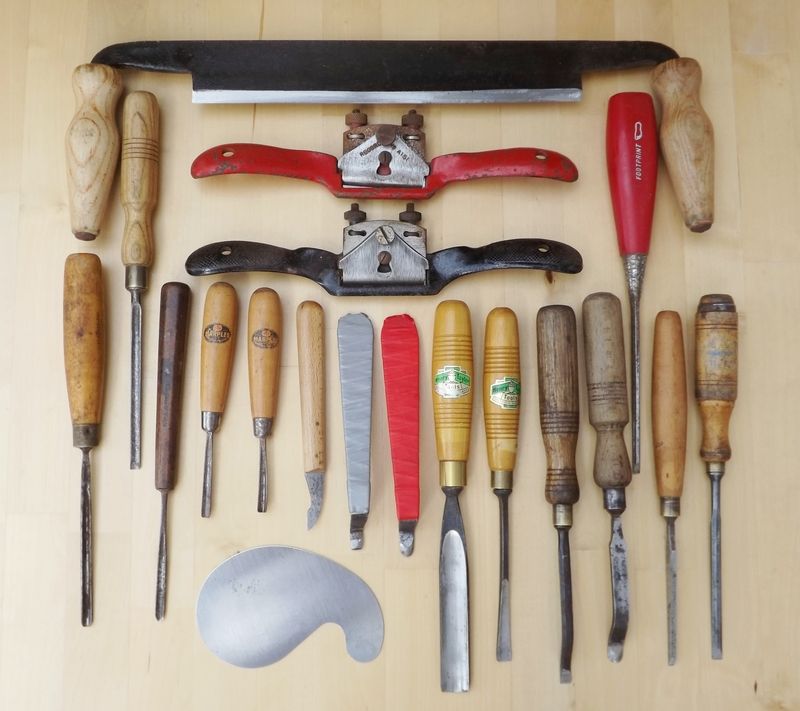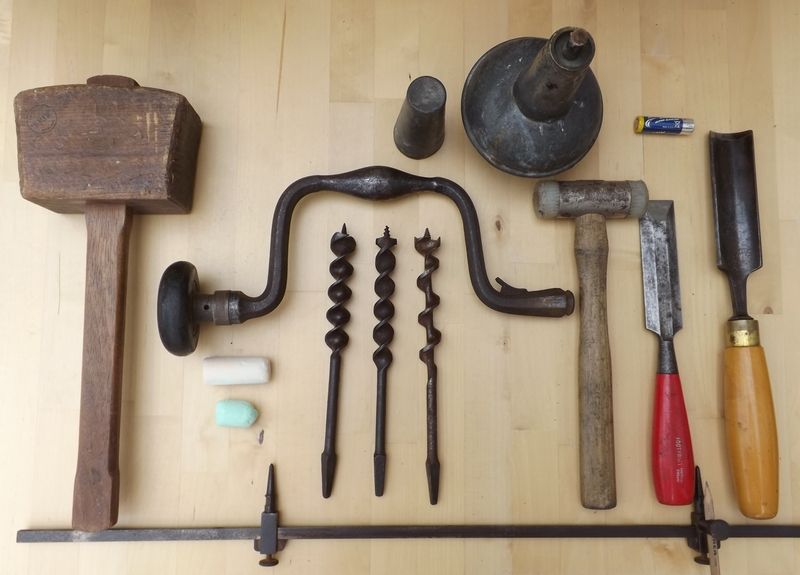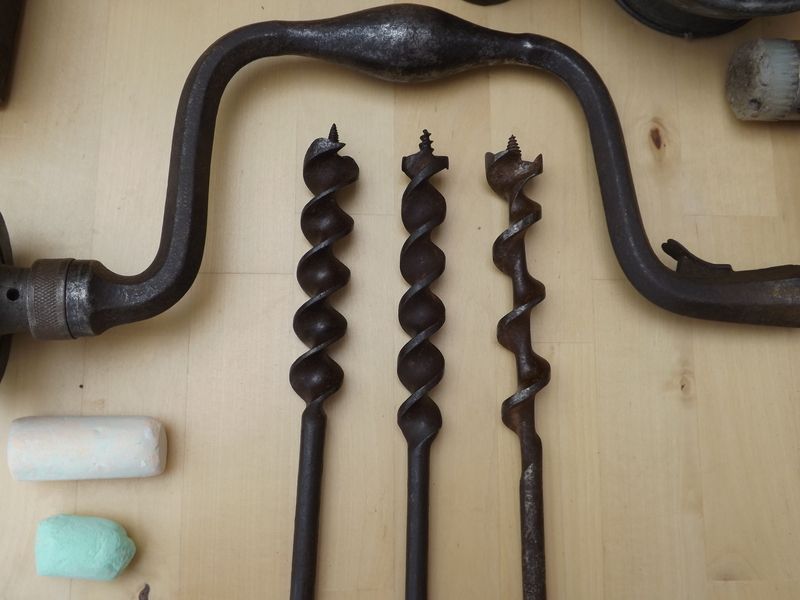Just a few things I would like to say on stock making. On this side of the pond partly machined gun stocks are not commonplace at all. Infact I have always made replacement stocks from an unshaped blank doing it the traditional way by fitting the action first to the head of roughly shaped stock blank. Doing it this way does give you some leeway in case things don’t start off according to the right plan. As I never made stocks on a regular basis I always tried to have a constant method I would use one initial thing I would always do would be put a centre datum line along top and bottom and butt of the blank. This line gives you a sight line helping to make sure you have let in the action squarely also helps in providing a start point for the cast on or off you may require.
The tools needed for shaping are purely a matter of what you feel comfortable with as for myself for most of the initial shaping work I preferred to use a draw knife, this is probably one of the oldest tools for wood working still in regular use today. It does have a lot going for it when you have mastered its use, firstly depending on the blades angle to the wood differing thicknesses of shavings can be removed with very little effort. On the down side is that you are working with a ten inch razor pulling it towards yourself and if you get things a wrong forgiveness is not one of this tools attributes, meaning it will cut you and in some cases very deeply indeed. With that said if you persevere to learn how to use one you will be surprised how many other wood working projects can be undertaken with this ancient of tools, in this modern world if it was not of any use its manufacture would be ceased many decades ago. I did see in one of those short films of a Holland stocker using a traditional draw knife because it cuts much cleaner than the mallet and chisel method, and if kept sharp reducing the need for a lot tedious smoothing of the wood later on. Also those two old wood working tools well by today’s standards they are, can be used for a lot of a stocks initial shaping these are the flat and round bottom spoke shaves.

In this first photograph at the top is the traditional draw knife below that is a flat bottomed spoke shave (red) and below that the round bottomed spoke shave (black). Starting from the left the first five are small gouges including a very small ’v’ and shallow half round gouge. Next to that a cabinet makers stiff bladed marking knife with a razor sharp edge, next with red and grey tape handles are two homemade small bladed cranked chisels one around cutting edge the other square for working the bottom of inlets. Following on are two shallow carving gouges half inch the other quarter inch ideal for forming drop points. The next two chisels are commercially made straight versions modified by heating and bending to make them cranked then re-tempering one round three eights cutting edge firmer type the other straight edged quarter inch bevel edged type. The last three chisels two are quarter and eighth inch bevel edged chisels and the other is an eighth inch firmer type. Finally is a curved cabinet makers scraper this tool is invaluable for scraping and smoothing areas of wood with tricky grain characteristics and of course general smoothing of internal curves. This is my basic set of wood working tools for stock shaping letting in lock’s action’s trigger guards and silver ovals.

In the second photograph are two examples of the large end of my chisel and gouge sets with an AA battery for scale at an inch and an inch and a half not much used in stock making. The bottom item is a “Trammel” sometimes known as a beam compass I use this a lot for marking distances from set points, you can also see there is also the capacity to fit a pencil. Finally there is a Brace and auger bits I use for stock hollowing and boring deep holes a lot slower than power tools and in consequence far slower to make a disaster of things. Can I say this Brace is not a carpenters or cabinet maker’s version it is in fact a Victorian fitters Brace used for turning large hole boring bits with having a metal handle can be “flogged” that is using a wooden mallet on the bow to make it turn. These braces where often found in boat builder’s yards and this example was made in Glasgow Scotland at the turn of the nineteenth Century and definitely made to last. Besides the mallet there is a soft faced well used hammer for taping metal parts without marking them, some large sticks of chalk and a Victorian engineers smoke lamp with snuffer which I use extensively for close wood to metal or metal to metal fitting, a word or too on this lamp which at the time was the pinnacle of its design. Firstly it can be used in any position including upside down without leaking fuel also the wick chimney is covered with a guard so you won’t burn your hand. All of that did not save it from being thrown away as being outdated until I rescued it from the bin, the chalk is used on the odd time lamp black is difficult to see on the pieces you are fitting. In the close up picture of the auger bits you will see that the centre one has a much coarser pilot screw thread, this is designed for boring along the wood’s end grain though now difficult to find.

The last picture is a “sash clamp” this was mentioned by another countryman of mine, so just in case its name did not travel over the pond this is what it looks like.
And finally I would just like to say keep all cutting tools razor sharp a better chance they won’t cut you. Measure twice and cut once. And the only tip I received from a professional stocker. “Stick to making stocks for box lock guns for the first five years for the practice.” Good advice! I have fitted new stocks on a number of side locks and each time I have said never again, each was not enjoyable because of the cost of the wood and the time taken.
